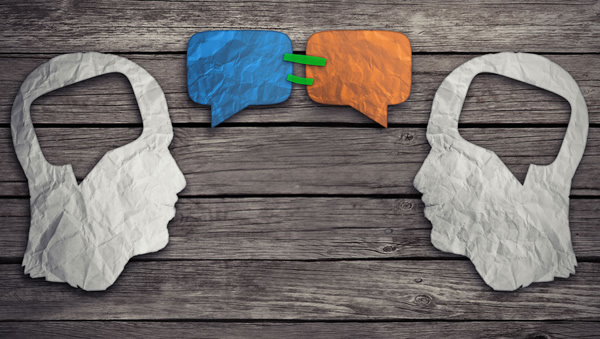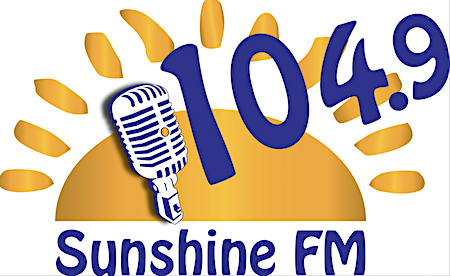Your Audio Does Not Want To Go Viral

Everybody wants to go viral.
It’s as if your little corner of fame or infamy is not complete unless you have some tidbit of content achieving the kind of exponential exposure that used to require things like, say, TV or radio.
The same goes for those who create audio content and post it online with all the best intentions and hopes for a viral miracle.
So the other day I read something that stopped me cold. It was a comment from Jenna Weiss-Berman, director of audio at BuzzFeed, a platform which knows approximatelyeverything about going viral. And here’s what Jenna said:
Audio will never go viral if it’s just audio alone. If it has photos, articles, and videos that go along with it, there’s a much better chance of it going viral.
In other words, says Jenna, if the audio is less the purpose of the content but rather just afeature of it, there’s a greater chance it will catch on because photos and articles and videos spread but audio does not. That means, dear audio creators, that the key to virality by this logic is to spread the text or the image or the video, while the audio rides along for free. So you’re not really sharing audio per se, are you? Not any more than you’re sharing audio when you share a video that contains an audio track.
I’m not assuming Jenna is right (although I suspect she is), but this made me ask a larger question: Do we really need audio to go viral? Does audio want to go viral and do consumers of audio want to spread it to their friends?
In fact, audio goes viral all the time. But not because the audio is shared on digital platforms. We don’t share audio, we share stories about the audio we hear, and we do that all the time.

Did you hear what Dan Patrick said today? Rush Limbaugh? Howard Stern?
And those stories, quite often, are face to face. They are part of conversation in what is still often considered the real world. Yes, word-of-mouth very often still includes words and mouths.
What Jenna’s describing – the photos and articles and videos – are pieces of that story we tell each other about the audio we love. And they can tell a story about the audio without requiring that consumers listen to that audio first or ever. After all, nothing we do with audio – not highlights, not tagging, not anything – will change the simple fact that while a picture is worth a thousand words, it takes a thousand words to paint a picture. And a thousand words take time to consume. And time is that scarcest of all resources.
I had an interesting experience a while back. I wrote a post on a platform and it went “viral.” But here’s the interesting part: The platform reported two statistics: Whether or not the post was read and whether or not it was shared. And it turns out that this particular post had more than twice as many shares as reads. In other words, only half the folks who shared the post actually read it. That means they weren’t actually sharing the content, they were sharing the title of the content. If going viral means reading the content takes too long but at least I read the title, then what chance does audio possibly have, especially when just one picture requires a thousand words and the time those words take to be heard?
As an experiment, I used this speech calculator and was dismayed to learn that 1,000 words requires more than 7 minutes of listening time! If you share a piece of content with your audience and it’s asking them to listen to 7 minutes before making the determination that it’s worth sharing, you might as well line the road to virality with a thousand speed bumps and a thousand exit ramps.
So should audio aspire to virality?
No, I don’t think so.
Audio is a warm and intimate embrace. People consume audio not only because it’s a media form that fits whatever else they’re doing, but also because it’s comfortable and immersive. It’s a dinner date, not a one night stand. It’s much more like a full-length movie than a photo or video, and full-length movies don’t go viral either. Audio is a warm bath, while pictures and videos are cold showers. Jump in, jump out. Done.
So does this mean you shouldn’t bother sharing your audio highlights or shows in order to introduce new listeners to your content? Of course not! You should definitely take advantage of all available tools to spread your audio around. However you should not expect or hope that it achieves some sort of viral infamy in the process. Your goal is to facilitate sampling. That’s all. And that’s critical.
Then it’s all up to the power of the content and its connection with the listener.
Once I had an email interchange with a public radio publisher who was convinced they had unlocked the key to making their audio viral. And they backed up the claim with proof. Hmm, I thought. Let me investigate. What they neglected to report was that the audio story that went viral was featured, among other places, on the massive NPR Facebook page. Indeed, most of the traffic for that bit of audio came directly from that link. So they had not really created a viral audio at all. What they had done was proved what we already know:More distribution for audio in popular places where people consume a lot of audio already will lead to more consumption of that audio. But this is not the same as “going viral,” since the consumption is not predicated on sharing.
Indeed, this is why the first episode of the first season of Serial was featured in the time slot for This American Life, thus “forcing” trial for the show for hundreds of thousands of listeners who are already tuned in to TAL on the radio or online. The show didn’t “go viral.” It simply had radio’s equivalent of the post-Super Bowl time slot. What did “go viral” was the conversation about the show – the talk in person, the chatter online, the earned media, the pictures, the videos, the stories about the reporters and the reporting. Who needs to share an audio show when links to that show sprout up everywhere? Just get me interested! I’ll use this magic tool called Google to take it from there.
Audio is guerilla warfare. You hear something’s good or you read the iTunes ratings for the podcast. One sample leads to a listen which leads to a longer listen which leads to a repeat listen which leads to a subscription. Then you tell your friend, or you write about it, or you read about it. Then it’s a hit and the media are all over it and people can’t avoid it even if they tried. And then, people are convinced they’re missing something if they don’t listen so they seek it out.
This is how Howard Stern won every market he ever conquered.
This is how a little experiment from the producers of This American Life became Serial.
So forget about making your audio go viral.
Instead, focus on making your audio worth listening to, worth discovering, worth talking about in any and every form and on any and every platform. And offer as many elements and tidbits and fan badges (we used to call them bumper stickers, but today they’re wrapped around laptops and mobile phones) and on-ramps as you can. Be where it’s hard to miss you. Earn the attention of taste-makers and influencers.
Do you know how many times I witnessed one person asking their friend who mentioned loving Serial what the heck Serial is?
Give them something worth listening to.
Give them something to talk about.
Let them talk.
Mark Ramsey is a veteran media strategist, researcher, and trend-maker who has worked with numerous media, publishing, and digital brands.
You can contact Mark Ramsey by heading to his website markramseymedia.com


